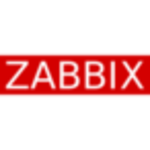What is our primary use case?
It is great for service level agreements and can comply fully with internet monitoring or any interface such as hardware or network interfaces and database instance. Irrespective of the MID, it can detect and monitor it. It is a vast platform and can make the cluster for the DC and DR. If one is down, it'll last shorter than the second one.
What is most valuable?
We prefer to use the PRTG because it has a low price. We provide solutions to the customer, and customers always prefer to pay less for the best output and quality. In addition, the solution allows customers to monitor anything within their network. For example, they can monitor their servers, application levels and virtualization instances.
What needs improvement?
The technical support service should be improved and is not as good as Cisco. However, PRTG support is better than before as they now have remote and TeamViewer support. Before, it was only based on mail communications and forum discussions. Irrespective of this improvement, the technical support response time is still prolonged, and the reservation can be better. I rate the response times a six out of ten. We've had very good experiences with Check Point, Juniper, and Cisco technical support.
Regarding additional features, currently, the default database has some limitations. There is a specific capacity that it can trigger. So, if they can make the enterprise-grade DV integrated, then a separate part will be needed to integrate. We want to customize every six months and do not need data older than six months.
It is the best solution. Personally, in my 20 years of experience working with monitoring systems, this is the best. Their software is very light and fast. Everything is great except the technical support response time. If they improve this, I'm sure it will be a top-class product competitor.
For how long have I used the solution?
We have been using this solution since 2006. The price is user-friendly, and the monitoring system is sound. The solution has a clear advantage as it can monitor per second. We use the enterprise paid version.
What do I think about the stability of the solution?
It is a stable solution. The performance is excellent, and the reporting system is good. We can customize, and if we want to detect a particular time in demand or an outage for a service provider, we can easily identify it.
What do I think about the scalability of the solution?
It is straightforward to scale, similar to SolarWinds.
How was the initial setup?
The setup is very easy, and for someone with no experience, which a few clicks, they can figure it out. However, if you want to integrate at a wide level, it will require some experience. I rate the setup a ten out of ten.
The deployment was short and took just about two to three minutes.
We provide maintenance services to customers, and this solution is suitable for larger companies. Most of the companies we work with are banks and government organizations, and if we include the interfaces, we are about 4000. It is also suitable for smaller companies, which can easily purchase the solution with minimal cost.
What was our ROI?
Regarding ROI, we can easily use and afford the licensing costs for a small office of about 100 to 200 users. This is impossible from the NPM, as they have the minimum interface values they must process.
What's my experience with pricing, setup cost, and licensing?
PRTG Network Monitor is a very affordable solution compared to other solutions. Other solutions cost nearly double or triple the cost. Not only is the pricing reasonable, but the quality is also.
The licensing cost depends on the number of interfaces. The details for the enterprise are published on their website, and because we partner with them, we receive a 15% discount. They do not customize their products for specific customers. Other solutions like SolarWinds and Cisco do not provide product customization support, but PRTG Network Monitor includes documentation for customization to the particular interface. For example, we wanted to monitor 300 SNMP nationwide and try to integrate them into the online UPS. It was very tough because no MIB value was published on their website. We had to request it, and they generated the script and made the MIB value, allowing us to initiate.
What other advice do I have?
I rate this solution a nine out of ten. Regarding advice, comparing WhatsUp Gold and PRTG and SolarWinds NPM, I would always recommend PRTG. They integrate a lot of features. Every month, we get the latest updates and better features within the support service and maintenance contract. The updates are free and included in the cost.
NPM is aware of the five-second values compared to other solutions, and PRTG has the first-second values, so it is very high. Therefore, for any incident within five seconds, PRTG can detect it. PRTG is the par, and it stands with the interface-based licensing category. But NPM's licensing category is different. It is the business policy of the individual which doesn't make sense.
Disclosure: My company has a business relationship with this vendor other than being a customer. Partner

















